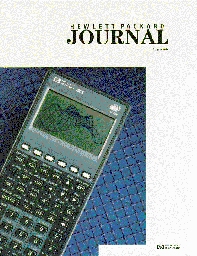|
 At first glance the HP 48GX advanced scientific graphing calculator
looks exactly like its predecessor the HP 48SX scientific expandable
calculator. With the exception of a few changes in the key labels both
calculators are physically
the same. The big difference is in functionality. In addition to having all
the functionality of the HP 48SX, the HP 48GX has more advanced problem solving
features, such as polynomial root finding and Fourier transforms, expanded
memory capability (up to 4.75M bytes of address space), and seven new plot
types including 3D and animation. A major attribute of the HP 48GX is a much
improved user interface.
At first glance the HP 48GX advanced scientific graphing calculator
looks exactly like its predecessor the HP 48SX scientific expandable
calculator. With the exception of a few changes in the key labels both
calculators are physically
the same. The big difference is in functionality. In addition to having all
the functionality of the HP 48SX, the HP 48GX has more advanced problem solving
features, such as polynomial root finding and Fourier transforms, expanded
memory capability (up to 4.75M bytes of address space), and seven new plot
types including 3D and animation. A major attribute of the HP 48GX is a much
improved user interface.
Environmentally friendly, easy to manufacture (i.e., manufacturability),
low parts count, and low cost are some of the phrases we hear used
today to characterize what an ideal product design should be.
The quality of any transmission system is based on how well it can transmit
error-free information from one location to another. In a digital transmission
system, the primary metric used to measure this quality is the bit error ratio,
or BER. The BER is defined as the number of bits received in error divided
by the number of bits transmitted. Although the BER value does convey some
important information, it is only a pass/fail parameter and it does not tell
the complete story about the quality of a digital transmitter.
Four of the papers in this issue are from the 1993 HP Technical
Women's Conference."
- In supercritical fluid chromatography
temperature control is very important.
Cooling is critical on the fluid supply end of the system and heating is
critical on the separation end.
- "Increasingly, test software development consumes the majority of the time
spent developing manufacturing resources for electrical test processes required
for new instrument products.
- Improving the near-field image quality of the
HP 21258A linear phased-array transducer, which is used for vascular ultrasonic
imaging, was the main goal for the engineers at HP's Imaging Systems Division.
- "Most of the software literature that discusses structured
analysis and structured design techniques focuses on applying the
techniques to the development of new software systems.
|
|